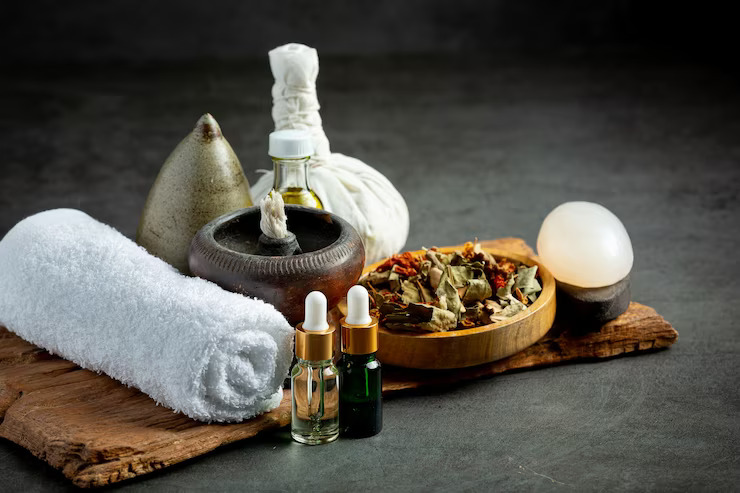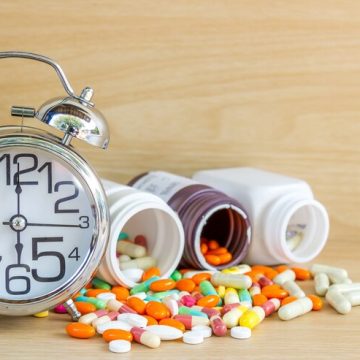Ayurvedic treatments, particularly Panchakarma therapy, are believed to work as a holistic way for acid reflux Gerd treatment.
Panchakarma works deeply at the cellular level, addressing the root cause by eliminating toxins and accumulated waste in the digestive system, which may contribute to acid reflux. The therapy aims to cleanse and purify, reducing the frequency and intensity of acid reflux episodes.
In Ayurveda, acid reflux is often associated with an imbalance in the pitta dosha, representing fire and water elements. Panchakarma treatments like Vamana and Virechana are designed to pacify the aggravated pitta dosha, restoring balance and alleviating acid reflux symptoms.
These therapies also support healthy digestion by enhancing digestive fire and improving gut motility, preventing the backward flow of stomach acid into the esophagus.

Acid reflux, or gastroesophageal reflux (GER), happens when stomach acid goes the wrong way into the esophagus.
Imagine the esophagus as a vital pathway connecting the mouth to the stomach.
Acting as a guardian, the lower esophageal sphincter (LES), a muscular ring, normally lets food into the stomach while keeping stomach contents from going back up. However, in acid reflux, this guardian, the LES, sometimes falters, allowing stomach acid to travel the wrong direction.
This common scenario highlights the intricate process of our digestive system, and when this process is disrupted, it can lead to discomfort.






Dietary factors indeed play a significant role in causing acid reflux.
The acidity of citrus fruits and juices like oranges, lemons, and grapefruits can irritate the esophagus. Consuming chocolate and caffeinated beverages can relax the lower esophageal sphincter (LES), promoting acid reflux.
Peppermint may relax the esophageal muscles, allowing stomach acid to flow back. Additionally, alcohol can relax the LES and increase stomach acid production, contributing to acid reflux.
Being mindful of these dietary triggers can be helpful in managing and preventing acid reflux symptoms.

Activities that elevate intra-abdominal pressure, like bending over or lifting, can exacerbate acid reflux in people with hiatal hernia. These actions may additionally compromise the function of the lower esophageal sphincter (LES), making it easier for acid reflux to occur.
Smoking: Smoking can worsen acid reflux by relaxing the lower esophageal sphincter (LES), enabling stomach acid to flow back into the esophagus.
Additionally, smoking can delay the emptying of stomach contents into the intestines, leading to a slower digestive process. This can cause a buildup of stomach acid, raising the chances of acid reflux.

Excess weight, particularly in the abdominal region, can lead to increased pressure on the stomach and contribute to the backward flow of stomach contents, including acidic juices, into the esophagus.
Additionally, the delayed emptying of the stomach associated with obesity can prolong the presence of food and stomach acid in the stomach, further raising the risk of acid reflux.
It’s important to manage weight and adopt a healthy lifestyle to mitigate these factors and reduce the likelihood of acid reflux.

During pregnancy, increased levels of the hormone progesterone cause the lower esophageal sphincter (LES) to relax. When the LES relaxes, stomach acid can flow back into the esophagus, resulting in acid reflux.
Additionally, the growing uterus can alter the position of internal organs, including the stomach, leading to changes in the stomach’s angle and contributing to acid reflux pregnancy.

Certain medications, such as specific antibiotics, can irritate the esophageal lining, making it more prone to acid reflux.
Additionally, drugs that slow down stomach emptying (like anticholinergic medications) can lead to the accumulation of stomach contents, increasing the chances of acid reflux. Moreover, certain medications may directly or indirectly boost stomach acid production, further contributing to acid reflux.
It’s important for individuals taking such medications to be aware of these potential effects and consult with a healthcare professional if they experience acid reflux symptoms.
Panchakarma Ayurvedic Treatment provides a holistic approach to managing acid reflux by targeting its root causes through detoxification and healing. This treatment aims to restore balance to the pitta dosha, which often plays a role in acid reflux. Here are the main steps involved in the Panchakarma treatment for acid reflux:
The Panchakarma Ayurvedic Treatment not only alleviates the symptoms of acid reflux but also promotes long-term digestive health by addressing the underlying imbalances. Embracing this holistic approach can lead to significant improvements in your overall well-being.
Panchakarma therapy is an Ayurvedic treatment that works at the cellular level to address the root cause of acid reflux by eliminating toxins and accumulated waste in the digestive system. This cleansing and purifying process helps reduce the frequency and intensity of acid reflux episodes.
In Ayurveda, acid reflux is often associated with an imbalance in the pitta dosha, which represents the fire and water elements. Treatments like Vamana and Virechana are designed to pacify the aggravated pitta dosha, restoring balance and alleviating acid reflux symptoms.
Common symptoms of acid reflux include a burning sensation, sore throat, backwash, noncardiac chest pain, and asthma.
Dietary factors that can trigger acid reflux include the consumption of citrus fruits and juices, chocolate, caffeinated beverages, peppermint, and alcohol. These can irritate the esophagus or relax the lower esophageal sphincter (LES), promoting acid reflux.
Lifestyle changes such as maintaining a balanced diet, avoiding smoking, managing weight, and avoiding activities that increase intra-abdominal pressure can help manage acid reflux. Additionally, being mindful of medication effects and making necessary adjustments with the help of a healthcare professional can also be beneficial.